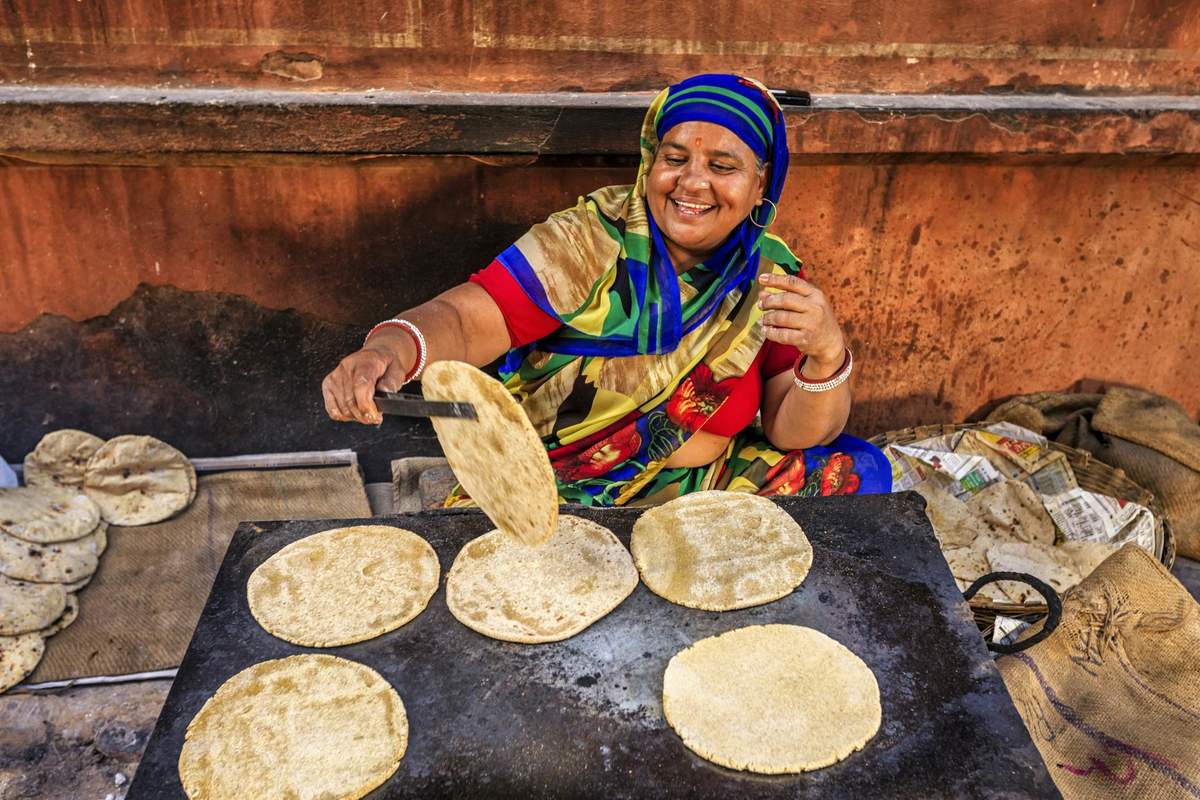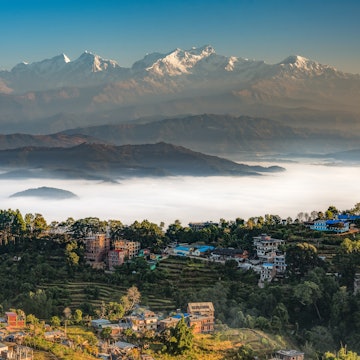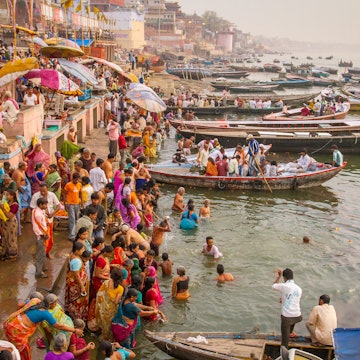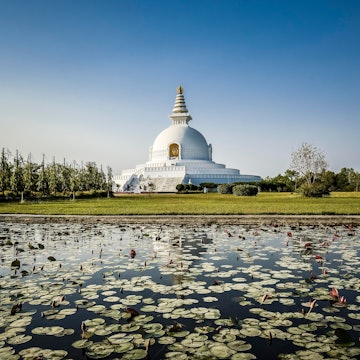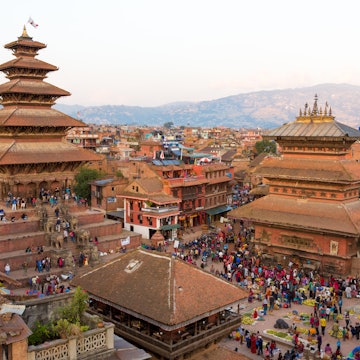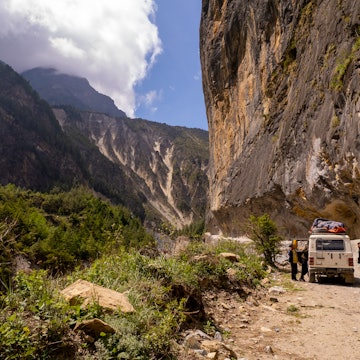
How to get your cell phone connected in India: eSIMs, wi-fi and mobile networks

Feb 19, 2025 • 8 min read

From the Mumbai's Gateway of India to the Taj Mahal, follow this guide to get connected while traveling in India. PradeepGaurs/Shutterstock
A land of diverse languages, faiths, festivals and customs, India and its cultural tapestry beguile many visitors – and can challenge them, too.
Sights such as the Taj Mahal in Agra, the Ajanta and Ellora Caves in Maharashtra, and the Khajuraho Temples in Madhya Pradesh bring to life this country’s illustrious history. Celebrations like Holi, the festival of colors, and Kumbh Mela, the world’s largest religious gathering, offer a chance to immerse yourself in millennia-old traditions and experience the vibrancy of Indian culture.
Whether you’re planning to travel slowly through one region or take a whirlwind trip across a swath of the country, staying digitally connected in India is easy, thanks to good mobile internet speeds, vast network coverage and affordable rates. Still, you might face challenges while figuring out how best to stay connected.
Here’s the essential information about mobile internet connectivity, eSIMs, wi-fi, service providers and data plans while traveling in India.
Will my phone work in India?
You can easily travel to India with your existing phone plan with a US or foreign carrier – but you’ll need to pay hefty roaming charges for all phone calls, texts and data usage. You might also face spotty coverage in some parts of the country. You can spare yourself such trouble by using a local SIM card or an international eSIM like Saily to stay connected in India.
You could get by with 2.5GB of data per week if you navigate using online maps, browse the internet for a few minutes a day, make audio and video calls for 15 minutes each daily, and limit social media usage to 30 minutes a day. But it’s easy to use up over 1GB of data in a single day streaming music and video for a few hours, or uploading views to social media platforms like Instagram. If you’re addicted to TikToks and Reels, you’re likely to use much more than 1GB data per day.

What mobile networks are available in India?
There are four main mobile network operators in India.
Jio currently offers the widest coverage and strongest 5G services.
Airtel comes in second.
Vodafone Idea (VI) offers mainly 4G coverage but has begun to roll out 5G coverage.
State-owned BSNL offers 4G and 3G coverage, with plans for 5G coverage in the works.
5G coverage is widespread in India and easily available in cities like Mumbai, Bengaluru, Jaipur and Delhi. Countrywide, 5G coverage is expected to increase significantly in the near future, with VI set to launch 5G services in March 2025 at pricing that will be cheaper than Airtel’s and Jio’s current offering.
Mobile internet coverage is generally reliable in urban areas, though may be spotty in remote areas.
How can I get a local SIM card?
It’s best to purchase a local SIM card from an operator’s kiosk at the airport when you arrive; you can also buy one at a store in any major city. Since Jio’s prepaid SIM requires you to have an Indian address and Aadhaar card (an Indian identification number), a prepaid SIM from Airtel is the only option available to foreign visitors.
Airtel offers data-only plans, with 50GB of data (valid for 30 days) for ₹361 (US$4.15) and 15GB (also over 30 days) for ₹181 (US$2.08). With Jio, ₹349 (US$4.02) gets you 2GB of high-speed data per day for 28 days plus unlimited local voice calls.
You’ll find Airtel kiosks in the arrivals area at international airports in cities like Delhi and Mumbai. You’ll need to show your passport for proof of identity and address. You will be asked for a local address in the state where you’re purchasing the SIM, and possibly a local mobile number to receive an OTP (one-time password) to activate your connection.
Though these often-changing rules are intended as security measures, they can confound many travelers. If you have a local contact in India – such as a friend, relative or even a driver – you could request their permission to use their address and contact number. Some telecom employees may accept a hotel address, and even suggest their own contact number for the OTP.
The overall experience of buying a local SIM at the airport can vary depending on the person behind the counter. It’s best to leave the store only after you’ve tested the SIM to make sure everything is set up properly and the right amount of data appears in your account.
In some cities, hotels might be able to arrange a SIM card for their guests – though expect to pay a markup for this service.

Is eSIM available in India, and how does it work?
Local providers offer eSIM services in India for compatible devices – but since international eSIM services are supported in the country, we recommend Saily. Using Saily in India starts at US$3.79 for 1GB, valid over seven days. Use code LP5 to receive 5% off your Saily mobile data plan in India.
An eSIM is a super-convenient option (as long as your smartphone is eSIM-compatible). After you’ve chosen a provider and paid for the plan, just follow the instructions on your device to activate the eSIM. You can set the eSIM up before you arrive in India, then activate it as soon as you arrive, allowing you to use mobile data immediately.
Major Indian carriers like Airtel and Jio also offer eSIM services, though like physical SIM cards, the registration process typically requires more documentation for foreigners. Further, eSIM activation might involve visiting a physical location to show documentation, making international eSIM options like Saily much more convenient.
Where can I find reliable wi-fi in India?
While wi-fi is available at major Indian airports, you’ll find it challenging to access it as a foreign tourist because you’ll need a local mobile number to receive an OTP (one-time password) to log in. Therefore, we recommend arranging an eSIM before you arrive so that you have mobile data as soon as you land. That way, you’ll be able to book transportation, send a WhatsApp message to your driver or get in touch with your hotel.
In cities like Delhi, Mumbai and Bengaluru, you’ll find fast and reliable wi-fi at many cafes and coworking spaces (it’s best to confirm this with the staff as soon as you walk in). Check the speed, especially if you plan on getting work done; cafes and other public spots often face issues with wi-fi connectivity.
In big cities, most hotels, resorts and hostels provide fairly reliable wi-fi – at least in common areas. You might find limited availability and slow speeds at accommodations in rural and remote areas. Luxury hotels and resorts usually have reliable high-speed wi-fi, both in rooms and in lobbies and restaurants.
How fast and reliable is the internet in India?
According to Speedtest, India ranks 23rd worldwide for mobile speeds and 93rd worldwide for fixed broadband speeds. The median mobile internet download speed is 103.75 megabits per second (Mbps), while the median fixed-broadband download speed is 62.62 Mbps.
If you’re using mobile internet in India on the 5G network, you’ll find it to be extremely fast and reliable, especially in urban areas. Expect to easily browse the internet, make video calls, stream music, use online maps to navigate and use social media without any delays. You might run into issues with availability and speed in remote mountainous locations or some rural areas.
Are there any internet restrictions or censorship laws?
Internet censorship is a reality in India, and websites and apps that are overly critical of the government can be blocked. Internet shutdowns have also occurred in recent years in parts of the country during times of political conflict – though this is unlikely to affect travelers visiting major cities and popular tourist sites. Chinese-owned apps such as TikTok and WeChat are blocked in India. VPNs are legal in the country.

Can I stay connected at major tourist sites?
While there is free public wi-fi at some tourist sites, railway stations, libraries, bus depots and other public places in some states, it isn’t always reliable. Free wi-fi isn’t common in villages and towns that are off the beaten track.
In places like Mumbai, Goa and Bengaluru; tourist sites like the Taj Mahal and the Gateway of India; and in rural areas, you’re better off relying on data through an eSIM or local SIM to browse the internet.
Will I encounter language barriers when getting connected?
You are unlikely to face language barriers in India, with local providers like Airtel and Jio offering English-language websites and apps. Staff at airport kiosks and in provider stores in most cities speak English fluently. Customer service, whether on the phone or through the chat feature on websites, is available in English.
How much does it cost to stay connected in India?
A local prepaid SIM works out to be the cheapest, with Airtel’s data-only plan with 50GB data (for 30 days) costing ₹361 (US$4.15), and 15GB for ₹181 (US$2.08). If you can manage to get a local SIM from Jio, ₹349 (US$4.02) gets you 2GB of high-speed data per day for 28 days plus unlimited local voice calls. An international eSIM like Saily can run US$3.79 per GB.

What local tech customs or etiquette should I be aware of?
India uses plug types C, D and M, with a standard voltage and frequency of 230V/50Hz. We recommend bringing a universal adapter for your devices.
Indians are always on their phones, whether they’re having conversations in public, sending WhatsApp or text messages, or watching Instagram Reels while commuting to work on the train. While many people wear headphones, just as many forgo them, perhaps assuming that the sound from their videos will simply blend in with India’s boisterous soundscape. Still, stay mindful when visiting places of worship like temples and churches by ensuring your phone is on silent.
How do I contact emergency services if needed?
In the event of an emergency, use the following numbers:
National emergency: 112
Police: 100
Fire: 101
Ambulance: 102
Tourist helpline: 1363
Road accident: 1073
Women in distress: 1091
Medical helpline: 104
Earthquake helpline: 1092
Google Maps is reliable to navigate around big cities, and downloading Uber and Ola will help you easily book rides to get around.
This article was produced by Lonely Planet as part of our partnership with Saily. Lonely Planet’s advice and opinions are solely our own.





